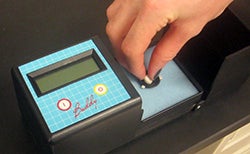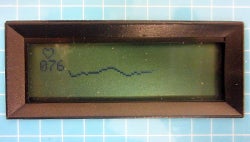Egg Beaters
Part of making a mechanistic prediction involves gathering information about different life stages. But how would you find out if a developing animal is feeling too hot or too cold? If the animal was in a shelled egg, would you knock on its shell and hope for a response? Or would you just assume that it can handle any temperature? Biologists are trying to figure out how to measure what temperatures developing animals can tolerate.

Just as human babies have different needs than adults do, the same is true for the needs of baby reptiles or birds, even those still developing in the egg. So how do scientists determine what conditions are good for an animal before it is even born? One way is to record the heart rate of the growing embryo, which is what we call a developing baby before it is born or hatches.
You may have noticed that your heart rate changes if you are nervous or if you get too hot. The same is true for embryos. For example, an embryo’s heart rate might increase steadily as it is heated up until it reaches 90°F. But at higher temperatures, it could start to slow down. This decrease heart rate tells a scientist that the embryo has become stressed.

When the egg reaches the temperature that causes its heart rate to drop rapidly, this is called the “breaking point.” By pushing an egg’s heart rate up to the breaking point, scientists are able to determine which temperatures the egg can tolerate. This information helps scientists to develop a more accurate prediction of the types of environments in which babies can survive.
Additional images via Wikimedia Commons. Eggs image by Zack Bittner on flickr.
Read more about: Mapping the Future
Bibliographic details:
- Article: Egg Beaters
- Author(s): Dr. Biology
- Publisher: Arizona State University School of Life Sciences Ask A Biologist
- Site name: ASU - Ask A Biologist
- Date published: 9 Jun, 2012
- Date accessed:
- Link: https://askabiologist.asu.edu/egg-beaters
APA Style
Dr. Biology. (Sat, 06/09/2012 - 09:18). Egg Beaters. ASU - Ask A Biologist. Retrieved from https://askabiologist.asu.edu/egg-beaters
Chicago Manual of Style
Dr. Biology. "Egg Beaters". ASU - Ask A Biologist. 09 Jun 2012. https://askabiologist.asu.edu/egg-beaters
MLA 2017 Style
Dr. Biology. "Egg Beaters". ASU - Ask A Biologist. 09 Jun 2012. ASU - Ask A Biologist, Web. https://askabiologist.asu.edu/egg-beaters

Baby reptiles, even those still developing in the egg, have different needs than adults.
Be Part of
Ask A Biologist
By volunteering, or simply sending us feedback on the site. Scientists, teachers, writers, illustrators, and translators are all important to the program. If you are interested in helping with the website we have a Volunteers page to get the process started.

